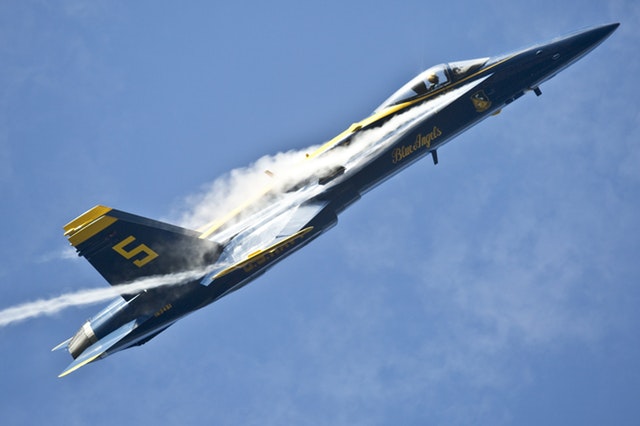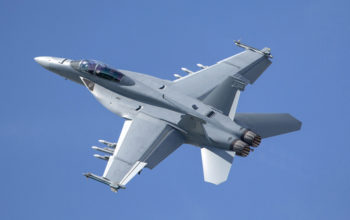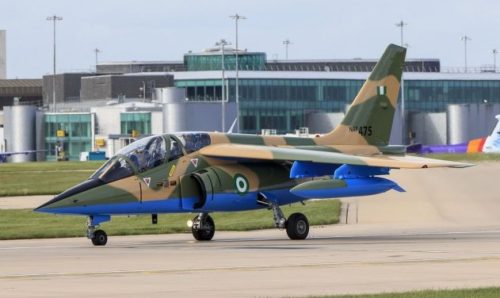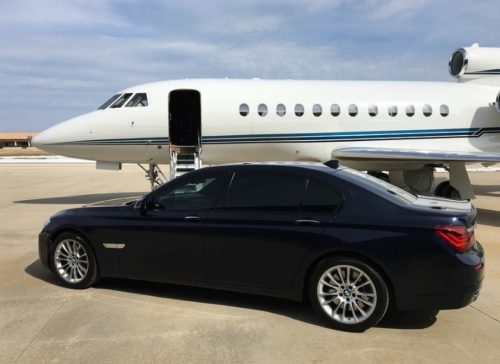The early 1950s revealed that committed jet-powered trainers were required to correctly and safely train pilots for jet aircraft. The performance gap between first-generation jets and piston-engine trainers and was just too big to prepare new pilots for the planes they would be flying.
First-generation trainer jets didn’t tend to have committed two-seat versions for type-specific training, and therefore a new pilot’s first flight in a high-performance jet fighter was solo in the early jet era. This resulted in several accidents and unacceptably higher attrition in both trainee and aircraft pilots. Thus the concept of this committed trainer jet was initialized.
Jet Trainers
First generation jet trainers included the Aero L-29 Delfín from Czechoslovakia, Fouga Magister from France, Aermacchi MB-326 from Italy, Cessna T-37 from America, BAC Jet Provost from Great Britain, PZL TS-11 Iskra from Poland, Soko G-2 Galeb from Yugoslavia and Canadair CT-114 Tutor from Canada.
From the early/mid-1960s, the higher performance of second-generation jet fighters had established the need for another generation of jet trainers to match them. Further demand for the second generation of jet trainers was an increased capacity concerning weapons.
Even though several first production training jets did have some restricted weapons capability and were capable of light attack sometimes, lots of the second generation trainers are expected to have a weapons capacity that would enable them to transition between the trainer and light attack functions easily.
The Dornier/Dassault Alpha Jet, which initially piloted in 1973, is an excellent example of the second generation of jet trainers.
The Franco-German Tango
Another angle on the Alpha Jet E in Čáslav in 2017!
The 1950s and 1960s marked the beginning of cooperation between France and Germany, especially concerning military equipment development that continues into the present.
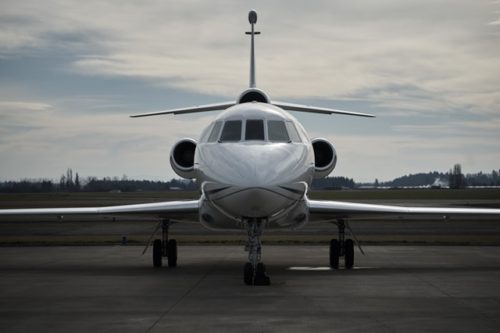
From the aviation context, before the Alpha Jet, the connection had borne fruit in the form of the Transall C-160 tactical transport aircraft and the Breguet Atlantic maritime patrol aircraft.
The Alpha Jet story began in 1967 when France and West Germany entered discussions about developing a collectively produced aircraft to match both countries’ need for a new trainer to replace their Lockheed and T-33 Fouga Magister fleets. However, from the beginning, there were some differences of opinion between the states regarding precisely what the aircraft could include in the range of its roles.
France desired a simple jet trainer that was simple to keep and appealing to the export market while Germany wanted a light attack capability included into the design as the Luftwaffe sought to replace their fleet of Fiat G.91 aircraft in addition to their Magister fleet. At the proposal of Germany, it was finally agreed that the aircraft could be designed in two different versions to house the needs of both countries.
There was also some debate about the engine for the aircraft beginning on. While both countries specified that the plane would be useful at high subsonic speeds, France wanted to utilize the domestically produced SNECMA Turbomeca Larzac turbofan while Germany moved towards the American built General Electric J-85 turbojet. Using the American engine wasn’t acceptable to France because it would enable America to implement some command over the exportability of the aircraft. With France refusing to fund the acquisition of American engines, Germany agreed to utilize the Larzac in their version of this aircraft.
The layout that would ultimately become the Alpha Jet was set forth by a group composed of the Breguet, Dassault and Dornier organizations. Initially referred to as the TA501, the layout was a mixture of present Breguet and Dornier theories and collaborated for the Franco-German trainer demand against arrangements from another Franco-German group, SNIAS/MBB, including a Dutch/German plan by VFW/Fokker. All of the three aircraft were produced around a set of Larzac engines.
The TA501 was declared as the leading design in July of 1970.
Throughout 1971 and 1972, the bases for constructing the new aircraft were ordered, and prototypes for both the German and French variants of the aircraft were assembled.
The German and French models had their first flights within months of one another, together with the French aircraft flying in October of 1973 and the German version in January of 1974.
It’s also commendable of notice that Dassault united with Breguet in 1971 and the Alpha Jet became the first aircraft to be built beneath the Dassault-Breguet name.
Taking on the Field
Former Luftwaffe Alpha Jet A in Red Bull navy colors. Found at Pardubice, the Czech Republic at 2017.

The Alpha Jet was among the first-second generation trainers of its course to take into the air and enter production and the first of western design.
As it was hit to the atmosphere by the Aero L-39 Albatros of Czechoslovakia; it did have a different though narrow head starts on its own primary western rival, the Hawker Siddeley (afterward, BAE Systems) Hawk trainer which first operated in August 1974.
Though it flew ahead of the Hawk, the British aircraft entered service before the Alpha Jet. This shouldn’t appear as an astonishment since the Alpha Jet was an international project while the Hawk was entirely British. The logistics of Alpha Jet manufacturing were complicated since the workshare was divided between Dassault-Breguet in France ( center and front fuselage), SABCA in Belgium (nose and wing flaps) and Dornier in West Germany (tail, wings, and rear fuselage).
While the Alpha Jet and Hawk have been often compared to one another through time, they’re quite evenly matched machines. When looking at the lists of consumer nations for both types, it becomes reasonably apparent that historical diplomatic ties into the aircrafts’ individual country of origin might have had more to do with which aircraft a country chose than aircraft performance did.
The Alpha Jet did well with countries in northern Africa which were former French colonies and retained strong ties to France while many countries that picked the Hawk had stronger historical ties to Great Britain.
This Alpha Jet had several benefits above the hawk including a more magnificent operational ceiling, higher cruising speed, a broader thrust to weight ratio, and a stronger airframe.
Also, the Alpha Jet’s high set wing also let it carry some bigger weapons and other underwing stores there was insufficient ground clearance for under the base set wing of the Hawk. The Alpha Jet’s capacity to take the big French-made Exocet anti-ship weapon is one instance of this.
The Hawk does hold the benefits of durability, Alpha Jet production stopped in 1991 while Hawk production continues into the present and higher capacity for upgrading. However, the Alpha Jet has done well for itself on second-hand markets in refurbished types. Ex-Luftwaffe Alpha Jet versions were especially popular with second-hand users following Germany retired and sold off their fleet throughout the 1990s.
Furthermore, former army Alpha Jets have found support with some civilian operators as aerobatic display aircraft or at the Aggressor function in training aviation tactics to military fighter pilots.
Baring the Teeth
Former Luftwaffe Alpha Jet A in Red Bull colors at Pardubice in 2016.
In regards to sending the Alpha Jet to encounter, Nigeria has definitely been the aircraft’s largest user.
Extended utilization of Nigerian Alpha Jets was executed during the First Liberian Civil War which served from 1989 to 1997.
Since 2013, Nigerian Alpha Jets are used against insurgent activities of this Boko Haram terrorist group that’s active in the northern regions of Nigeria as well as regions of adjacent countries.
During the Persian Gulf War in the early 1990s, Alpha Jets of the Qatari air force were used for the coastal patrol to defend against potential Iraqi beach attack.
Moroccan Alpha Jets were used in the counterinsurgency role throughout the War of Western Sahara which lasted from 1975 to 1991.
When fitted for attack functions, the Alpha Jet can take a highly regarded assortment of unguided or guided weaponry under the wings in addition to American made AIM-9 Sidewinder or French-built R.550 Magic air-to-air missiles for self-guard. It may also be implemented with 30mm DEFA or 27mm Mauser cannon pods on the fuselage centreline. A surveillance pod was an added alternative for installing on the centreline.
Some versions of this aircraft are fitted with laser targeting equipment thus letting them assign targets for other plane carrying laser-guided bombs.
The Alpha Jet Family
Portuguese air force Alpha Jet A seen at Zeltweg, Austria at 2013. Alpha Jet production lasted from 1973 to 1991, and a complete 512 were created with over half being exported.
Generally, the aircraft family can be divided into three generations:
First Generation
The first generation consisted relatively simply of the early A and E versions built to French and German standards respectively.
Due to the German desire for light attack, the Alpha Jet A was a more intricate aircraft compared to the E version from the standpoint of avionics.
Externally, the most straight away visible difference between the two versions was the nose. The A version had a flat, sharp nose while the E version had a short nose with strakes on both sides.
The first generation also incorporated Belgium’s Alpha Jet B version, though it was a standard E version when it entered service.
Second Generation
Three versions of this aircraft represent the second generation: Alpha Jet 2, MS1, and MS2
The MS1 was the label specified to the Egyptian export version of the E version coach. These aircraft were constructed in Egypt from kits provided by Dassault-Breguet.
The MS2 was an optimized attack version depending on the MS1. It included several improvements to avionics in addition to more powerful engines.
The Alpha Jet 2 was a ground attack optimized version of the E version that included aspects of the MS2.
Third Generation
This generation never actually existed beyond newspaper ideas. It comprised the Lancier and Alpha Jet ATS variants.
The Advanced Trainer System (ATS) was a thoroughly modernized version with complete glass cockpits and additional modern avionics.
Lancier was the optimized assault version and was to have contained all of the updates of the ATS version plus attack radar.
Alpha Jet B+
In 2000, Belgium pioneered an update program for their Alpha Jet B fleet.
This update included modern flight controllers and heads up display together with a modernized navigation system among other improvements.
From the late 2000s, France had some of the E models updated to the B+ standard.
The Alpha Jet Today
The Alpha Jet has operated in the air forces of 12 nations and has discovered its way onto private records in Germany, Canada, Austria, USA, and Great Britain.
It’s served as the mount for military manifestation teams in France, Egypt, and Portugal.
In civilian service, it’s used for aerobatics displays, but can also be highly appreciated as a stage for analysis and inspection flights in addition to an attacker aircraft for contemporary military fighter pilots to operate in aviation training.
In late 2017, the Alpha Jet remains to serve the majority of the military operators that preferred it. However, the type’s European army users are critically thinking to substitute their Alpha Jets or leaving them without replacement.
Whether in military or civil hands, it appears that the Alpha Jet will furthermore be flying for some time. How many opportunities are abandoned for the public to observe the kind perform is another issue entirely.
